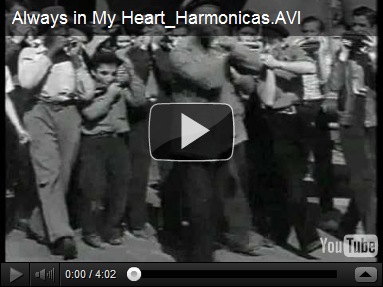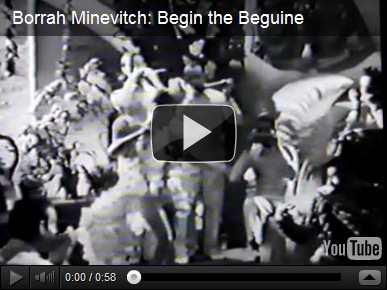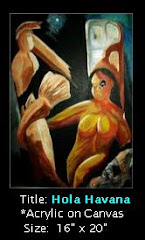In April of 2009 I wrote a blog called Borrah Minevitch And His Harmonica Rascals, and included a number of Youtube videos. Sadly, I discovered earlier this week that most of those links are no longer active.
Luckily, there are other video clips available, and so today a reprise of that blog with new embedded videos.
As I’ve cautioned before, sometimes the links I post end up in the great bit-bucket in the sky. If you see something you want, better to get it while you can.
Specialty acts were commonplace in the early days of show business, when high visibility meant working steadily in Vaudeville. After all, you could hone an act over the years, and perform it basically unchanged for decades, and never run out of audiences.
Of course, movies and television destroyed that.
In one short appearance a specialty act could `burn’ their entire repertoire in front of a national audience.
But while it lasted, particularly during the heyday of Vaudeville up to the early days of television, specialty acts were in great demand.
One of the best was Borrah Minevitch and his Harmonica Rascals, although today some of his antics might not be considered politically correct.
Minevitch, who was born in Kiev, Russia immigrated to the United States at the age of 8, and studied piano and violin, but he fell in love with the harmonica.
In 1925 (at the age of 20) he came up with the idea of a `specialty act’; he hired a dozen or so young boys, taught them the basics of the harmonica, dressed them in formal attire, and formed a `harmonica orchestra’.
Within a year, the Harmonica Rascals were one of the hottest acts in Vaudeville.
When sound came to the movies, Minevitch (who was a consummate promoter) worked his ensemble into a dozen shorts and some feature films. His act featured physical comedy, along with harmonica musical antics.
An early appearance of the Harmonica Rascals was in One In A Million, a Sonja Henie musical comedy from 1936. Here you’ll hear them play the title song to the movie, in a medley with Ravel’s Bolero, and the classic Lime House Blues.
Another big screen appearance came in 1942 as Borrah and is rascals played `Always In My Heart’ from the movie of the same name.
One of his best short films came in 1942, with Borrah Minevitch’s Harmonica School. We’ve a couple of clips from that film.
Harmonica School 1943
Borrah Minevitch - Dave Doucette - Carl Ford - Ben Burley - Ernie Morris - Hugh 'Pud' McCaskey - Sammy Ross - Etto Manieri - Pat Marquis - Frank Marquis - Bill McBride
The Internet Archive also has several classic 78 recordings of Borrah Minevitch and his rascals performing:
Minevitch would retire in 1947, and die suddenly of a heart attack in 1955. He paved the way, of course, for other Harmonica specialty acts that would follow – most notably the Harmonicats.













